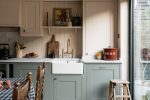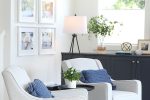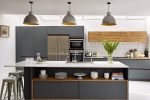When it comes to selecting a lamp, the style is paramount as it sets the tone for the entire room. The myriad of lamp styles available can be overwhelming, ranging from traditional to contemporary, industrial to bohemian. Each style carries its own unique characteristics and can evoke different feelings and atmospheres.
For instance, a classic Tiffany lamp, with its intricate stained glass shade, can add a touch of vintage elegance to a space, while a sleek, minimalist lamp with clean lines may enhance a modern aesthetic. Understanding the overall design theme of your room is crucial in making the right choice. Moreover, the style of the lamp should harmonize with other elements in the room.
If your decor leans towards rustic charm, consider lamps Tomosshop made from natural materials like wood or wrought iron, which can complement the organic feel of the space. On the other hand, if your home features a more eclectic mix of styles, you might opt for a bold statement piece that stands out and adds character. The key is to ensure that the lamp not only serves its functional purpose but also enhances the visual narrative of your interior design.
Finding the Perfect Size
Size is another critical factor when selecting a lamp, as it can significantly impact both functionality and aesthetics. A lamp that is too small may get lost in a large room, while one that is excessively large can overwhelm a small space. To determine the appropriate size, consider the scale of your furniture and the dimensions of the room.
For instance, if you have a spacious living room with high ceilings, a tall floor lamp can create an impressive focal point and provide ample lighting. Conversely, in a cozy reading nook, a smaller table lamp may be more suitable to maintain an intimate atmosphere. In addition to height and width, the proportion of the lamp in relation to other furnishings is essential.
A general rule of thumb is that the bottom of a table lamp’s shade should be at eye level when seated. This ensures that the light is directed where it is needed most without causing glare. When it comes to floor lamps, they should ideally stand between 58 to 64 inches tall to provide adequate illumination without obstructing sightlines.
By carefully considering size in relation to your space and furniture, you can achieve a balanced and harmonious look.
Selecting the Ideal Height
The height of a lamp plays a pivotal role in its functionality and overall design impact. Different types of lamps serve various purposes, and their height should align with these functions. For example, table lamps are typically used for tasks such as reading or working, so their height should allow for comfortable illumination without straining the eyes.
A standard table lamp usually ranges from 28 to 32 inches tall, making it suitable for most end tables or desks. However, if you have higher furniture or prefer a more dramatic look, you might consider taller options. Floor lamps offer even more versatility in height selection.
They can range from around 50 inches to over 70 inches tall, depending on their intended use. A reading floor lamp should ideally be positioned so that its light source is at or slightly above eye level when seated. This positioning not only enhances functionality but also contributes to the overall aesthetic of the room.
Additionally, adjustable floor lamps provide flexibility, allowing you to customize the height based on your needs and preferences. By thoughtfully selecting the height of your lamps, you can create an inviting and practical lighting solution.
Incorporating Different Materials
The material of a lamp significantly influences its appearance and durability. Various materials can evoke different styles and feelings within a space. For instance, ceramic lamps often bring a sense of warmth and texture, making them ideal for cozy settings like bedrooms or living rooms.
Glass lamps can add an element of sophistication and elegance; frosted or colored glass shades can diffuse light beautifully while creating an ethereal glow. Metal lamps are another popular choice, offering a sleek and modern look that can fit seamlessly into contemporary decor. Brass or gold finishes can introduce a touch of luxury, while matte black or brushed nickel can provide an industrial edge.
Additionally, combining materials can create visual interest; for example, a wooden base paired with a fabric shade can strike a balance between rustic charm and modern simplicity. When selecting materials for your lamps, consider how they will interact with other elements in your space, such as furniture finishes and wall colors.
Mixing and Matching Lamp Shades
Lamp shades are often overlooked but play an essential role in defining the overall look of a lamp. The right shade can enhance the lamp’s style while also affecting how light is dispersed throughout the room. Mixing and matching shades can create unique combinations that reflect your personal taste and add depth to your decor.
For instance, pairing a bold patterned shade with a simple base can create an eye-catching contrast that draws attention without overwhelming the space. When experimenting with different shades, consider factors such as color, texture, and shape. A drum shade may lend a modern feel, while a bell-shaped shade could evoke a more traditional vibe.
Additionally, layering shades—using multiple shades on one lamp or combining different styles across various lamps—can create an eclectic yet cohesive look. This approach allows for creativity while ensuring that each piece contributes to the overall ambiance of the room.
Adding a Pop of Color
Incorporating color into your lighting choices can dramatically alter the mood of a space. A brightly colored lamp can serve as a statement piece that injects energy into an otherwise neutral room. For example, a vibrant red or teal lamp can become a focal point in a minimalist setting, drawing attention and sparking conversation.
Alternatively, softer hues like pastel shades can create a calming atmosphere, perfect for bedrooms or relaxation areas. When adding color through lamps, consider how these hues interact with existing decor elements such as wall colors, furniture upholstery, and artwork. A well-placed colorful lamp can tie together disparate elements within a room or serve as an accent that complements other decorative pieces.
Additionally, using colored bulbs or smart lighting options allows for further customization; changing light colors according to mood or occasion can enhance the versatility of your space.
Considering Functionality
While aesthetics are important in choosing lamps, functionality should never be overlooked. The primary purpose of any lamp is to provide light; therefore, understanding how you intend to use each lamp is crucial in making an informed decision. For instance, if you need task lighting for reading or working, look for lamps with adjustable arms or shades that direct light precisely where it’s needed.
Desk lamps with built-in USB ports or dimmable features offer added convenience for modern lifestyles. Ambient lighting is another consideration; floor lamps with multiple bulbs or those designed to diffuse light evenly throughout a room can create a warm and inviting atmosphere without harsh shadows. Additionally, consider energy efficiency when selecting bulbs; LED options not only consume less power but also have longer lifespans compared to traditional incandescent bulbs.
By prioritizing functionality alongside style and design elements, you ensure that your lighting choices enhance both practicality and aesthetics in your home.
Creating a Cozy Ambiance
The ultimate goal of effective lighting is to create an inviting atmosphere that feels warm and welcoming. Layering different types of lighting—ambient, task, and accent—can help achieve this cozy ambiance. Ambient lighting provides general illumination throughout the room; this can be achieved through ceiling fixtures or strategically placed floor lamps that cast soft light across the space.
Task lighting complements ambient lighting by providing focused illumination for specific activities like reading or crafting. Table lamps on side tables or desk lamps in workspaces serve this purpose well. Accent lighting adds depth by highlighting artwork or architectural features; this could include wall sconces or small spotlights directed at particular elements within the room.
By thoughtfully combining these various lighting types and considering their placement within your space, you can cultivate an atmosphere that feels both comfortable and inviting—a true sanctuary within your home environment.




